LONDON: In October 1963, a young British artist, fresh out of London’s Royal College of Art but already making a name for himself as a groundbreaking painter, traveled to Egypt, fulfilling an ambition to visit a country that had long fascinated him.
David Hockney’s odyssey to the land of the pharaohs 60 years ago would prove to be a turning point in the nascent career of an artist on the cusp of achieving global fame.
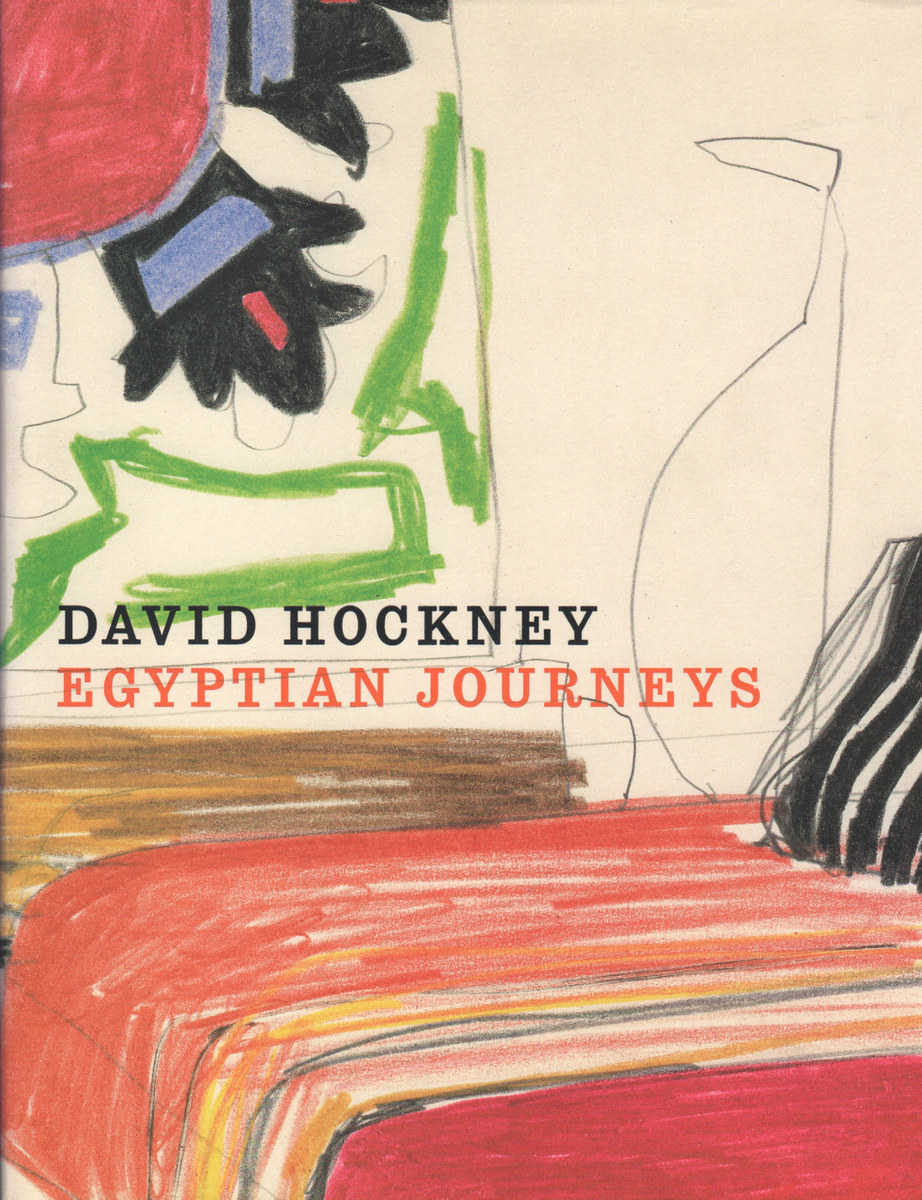
Cover of the catalogue for the “Egyptian Journeys” exhibition, featuring a comprehensive selection of the drawings Hockney made in 1963 and on a subsequent return trip to Egypt in 1978. (Supplied)
As Marco Livingstone, an art historian and author of numerous books about Hockney, would later write, Hockney “responded to his first experience of the country and its monuments with some of the liveliest and most inventive drawings he had yet made directly from life.”
Furthermore, “his contact with one of the world’s major civilizations left a permanent mark on his subsequent work, encouraging him towards a greater naturalism through direct observation.”
The 40 or more drawings Hockney produced on that journey “remain among his masterpieces.”
But as fascinating as fans of the artist might find the details of Hockney’s long-forgotten expedition to Egypt, even more intriguing is the story of what became of those 40 drawings, a tale in which politics and the machinations of the art world played out against a background of not one but two of the most momentous events the modern world has known.
In February 1962, The Sunday Times had become the first British newspaper to publish a color supplement, and the following year its editor, Mark Boxer, hit on the idea of commissioning Hockney, then an up-and-coming young artist, to produce some art for the magazine.
It was, as Livingstone would later write, “a great opportunity and an honor for an artist then aged only 26.”
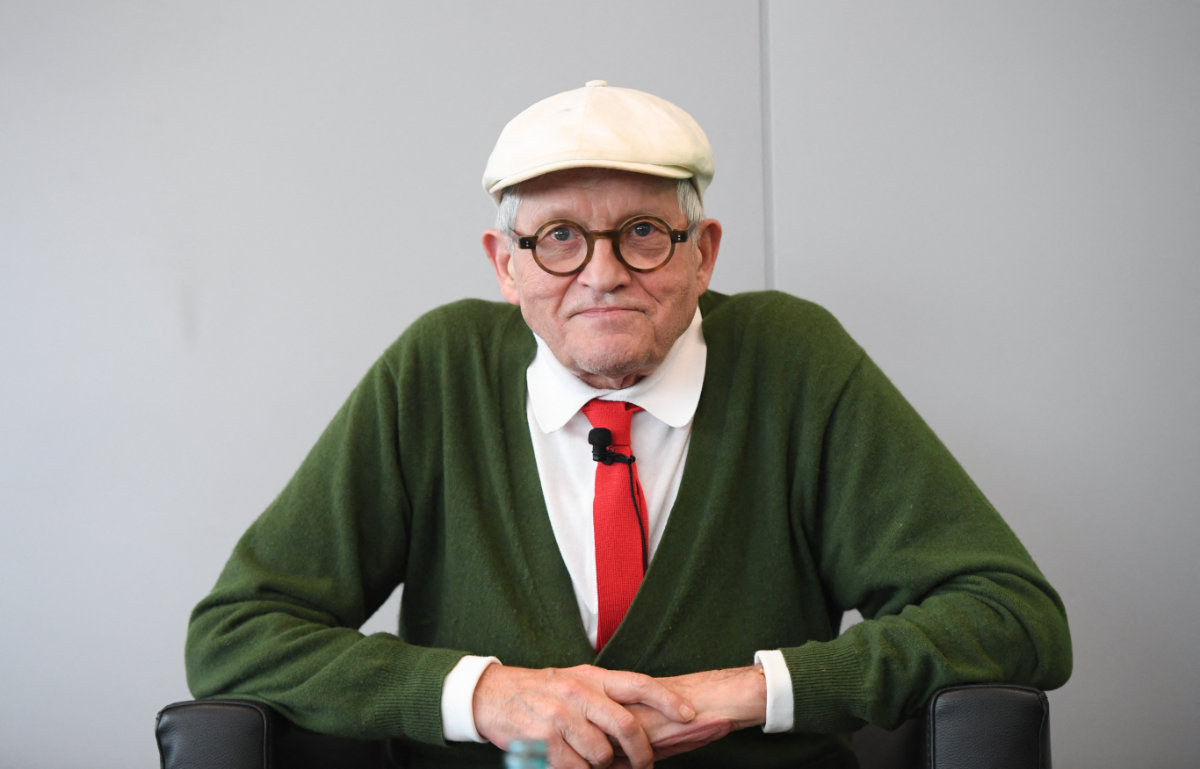
David Hockney in 2016. (AFP file photo)
Hockney rejected Boxer’s first suggestion, that he travel north to make some drawings in his hometown of Bradford, but when the newspaper offered to bankroll a journey to Egypt, he leaped at the chance.
The commission chimed with an interest Hockney had already developed in ancient Egyptian art, which had influenced paintings he had produced while still a student.
These included “A Grand Procession of Dignitaries in the Semi-Egyptian Style,” “Egyptian Head Disappearing into the Clouds,” and “The First Marriage,” all painted between 1961 and 1962 and inspired by studies he had made of Egyptian art in Western museums.
Hockney spent most of October 1963 in Egypt, visiting Cairo, Alexandria and Luxor. It was, as he later recalled, “a marvelous three weeks … a great adventure.”
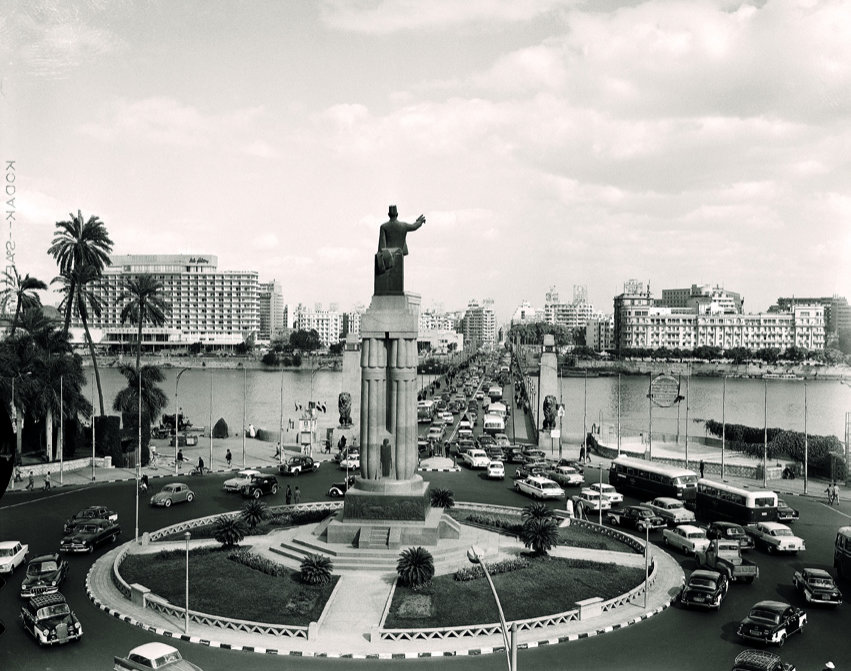
A view of the Cairo roundabout in the 1960s when David Hockney first visited Egypt, where he was inspired to draw ‘everywhere and everything.’ (Getty Images/AFP)
He took no camera, only drawing paper, and “I drew everywhere and everything — the pyramids, modern Egypt. It was terrific. I carried all my drawings everywhere and a lot of equipment, and I would get up very early in the morning.”
Hockney “loved the cafe life” of Cairo. He found Egyptians to be “very easy-going people, very humorous and pleasant. I liked them very much.”
But not one of the drawings he produced under the Egyptian sun would ever be printed in The Sunday Times.
On Nov. 22, 1963, a month after Hockney’s return to England with his portfolio of work, President John F. Kennedy was assassinated in Dallas. In the wave of global coverage that followed, the planned Hockney issue of the magazine was swept aside, never to be revisited.
Exactly two weeks after Kennedy’s killing, however, many of the drawings went on public display as part of Hockney’s first solo exhibition, “Pictures with People in,” held at the London gallery of his dealer, John Kasmin.
FASTFACTS
David Hockney’s first trip to Egypt was commissioned by art critic David Sylvester and journalist Mark Boxer at the Sunday Times.
“View from Nile Hilton” sold for $426,666 at Christie’s London on Feb. 8, 2001.
“Portrait of an Artist (Pool with Two Figures)” stands as the most expensive painting by a living artist ever sold, for $90 million, in 2018.
The show was a great success, and many of the drawings were snapped up for what, as would soon become apparent, were bargain prices.
At the show’s end, Hockney left for America, setting up a studio in Los Angeles, where he embarked on the trio of iconic paintings of swimming pools for which he is best known.
In February 2020, one of them, “The Splash,” painted in 1966, sold at a Sotheby’s auction in London for $30 million. Another, “A Bigger Splash,” painted the following year, hangs in Tate Britain.
Meanwhile, Hockney’s Egyptian drawings had found their way into various private collections around the world. Here they would remain, discreetly changing hands occasionally and accruing value and mystique. None has ever been purchased by a public gallery.
Hockney made only one painting after his return from Egypt. “Great Pyramid at Giza with Broken Head from Thebes” was painted in 1963, very shortly after his trip. It went into private hands but 50 years later came up for sale at Christie’s in London, where it sold in February 2013 for £3.5 million.
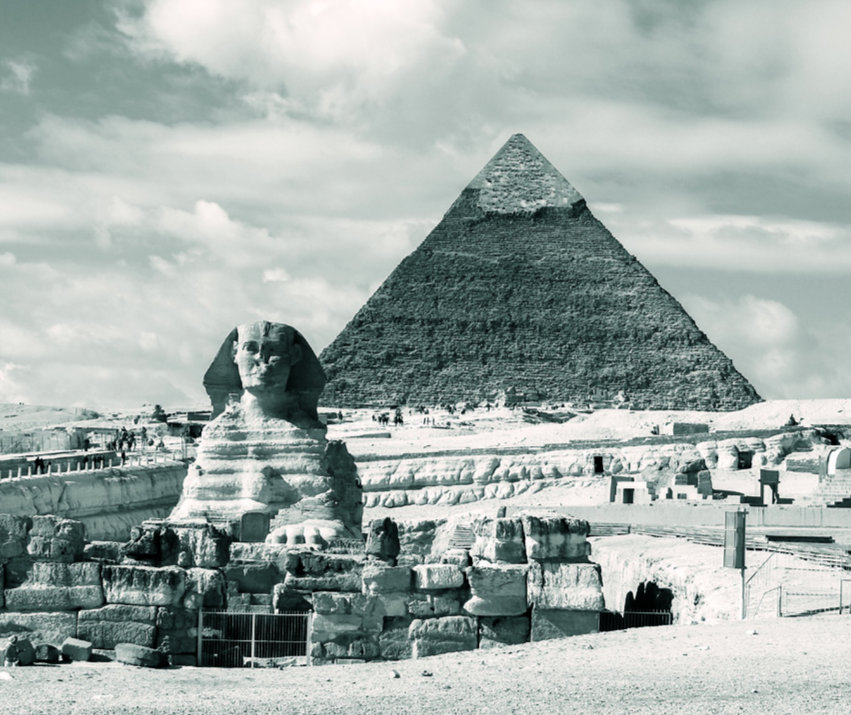
A view of the Sphinx and the Giza Pyramids in Cairo, which inspired David Hockney to draw the “Great Pyramid at Giza with Broken Head from Thebes” after his return from Egypt in the 1960s. (Shutterstock image)
On Feb. 8, 2001, however, one of the drawings Hockney had made in Egypt surfaced in spectacular fashion in an earlier Christie’s auction in London. “View from Nile Hilton,” made in colored wax crayons and pencil on paper, measuring 31 cm by 25.4 cm and signed and dated by the artist, went under the hammer with an estimated price of between £8,000 ($10,000) and £12,000.
That, as Livingstone told Arab News, was already considerably more than the £50 or so that the drawing would have fetched back in 1963.
But then something extraordinary happened. After a bidding war between two anonymous bidders, the drawing went for £234,750.
At the time, the identities of both bidders remained unknown.
But, as Livingstone revealed to Arab News, the victorious collector was Sheikh Saud bin Mohammed bin Ali Al-Thani, Qatar’s then minister of art, culture and heritage, who at the time was creating collections for his country’s planned museums and was one of the most prolific art buyers in the world.
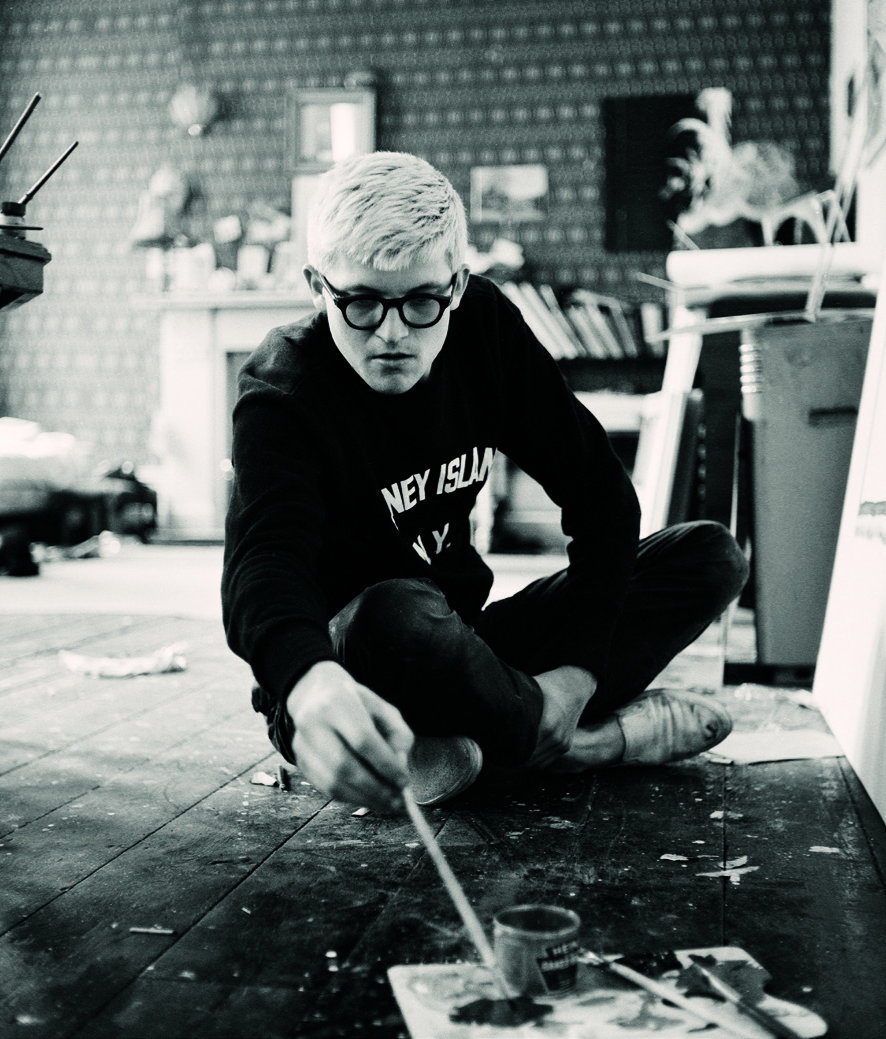
David Hockney working in a studio, around 1967. (Getty Images/AFP)
The reason the price of the Hockney went through the ceiling at the auction, said Livingstone, was because the sheikh “was in battle for it with David Thomson, who was the son of Roy Thomson, who was the owner of the Sunday Times in 1963.
“In 1963, they could have bought the drawing for next to nothing. Thomson wanted to have a memento of the Egypt trip, but he was outbid by Sheikh Saud, who I think was determined that every one of the drawings that was available would go to him.”
Because Sheikh Saud had a plan.
“Kasmin, Hockney’s dealer from 1962 until 1992, was contacted by Sheikh Saud about finding other drawings because Sheikh Saud wanted to do an exhibition of them in Cairo at the Palace of Arts,” said Livingstone.
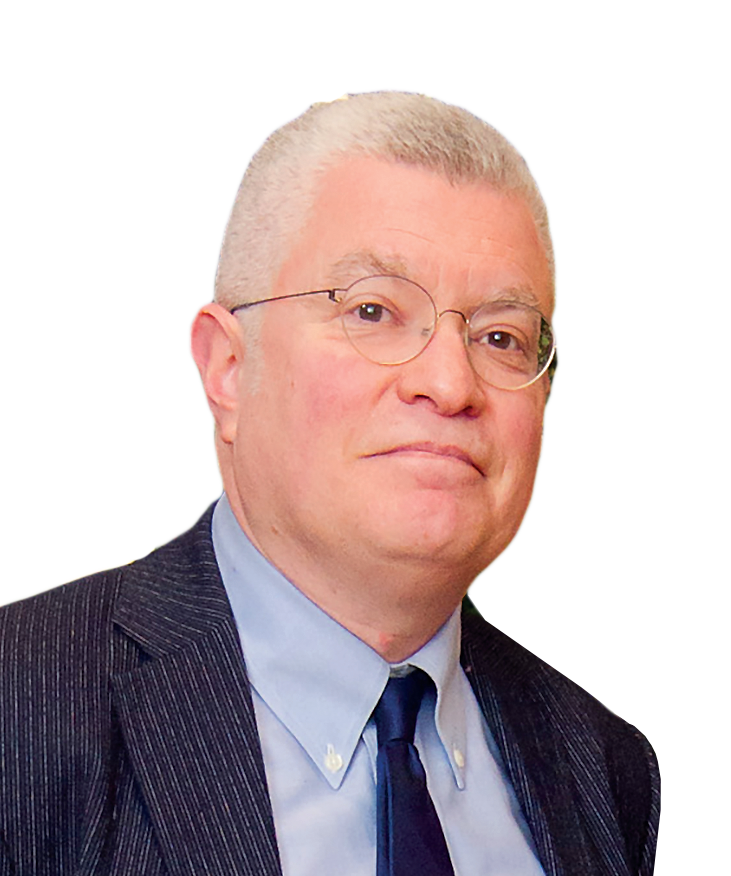
Marco Livingstone. (Supplied)
Livingstone, an authority on Hockney who over the years has worked closely with the artist on many book and exhibition projects, was in turn contacted by Kasmin, and between them “we brought together everything we could find that people were willing to lend, and by then Sheikh Saud had bought some of the best drawings.”
Rounding up the body of work was not an easy task.
“I knew where a few things were and so did Kasmin, who would have sold some of them, but this was nearly 40 years later. By then he had sold his archive to the Getty, so he didn’t necessarily have that information to hand, and so we relied on his memory about whom he might have sold them to, but some of those pictures would have changed hands in the meantime,” Livingstone said.
Eventually, under the exhibition title “Egyptian Journeys,” they pulled together “a comprehensive selection” of drawings Hockney had made in 1963 and on a subsequent return trip to the country in 1978.

David Hockney walks past a photographic copy of his 2007 painting ‘Bigger Trees Near Water’ at the Tate gallery in London in 2009. (AFP)
Once again, however, a major geopolitical event would intervene.
Four months before the Hockney exhibition was due to open in Cairo, the 9/11 attacks on America threw the region into turmoil.
In the event, the show did go ahead, running at Cairo’s Palace of Arts from Jan. 16 to Feb.16, 2002, but it was touch and go, as Livingstone’s preface to the catalogue, printed in Italy ahead of the show, made clear.
Although planning for the exhibition had begun in the summer of 2001, “the catalogue goes to press at a time of great uncertainty on the world stage,” he wrote.
This might, he added, “seem on the surface like a small show,” but “we are making a very important statement with this exhibition about the mutual respect between our cultures, and the degree of friendship and understanding that can be achieved through the healing power of art.”
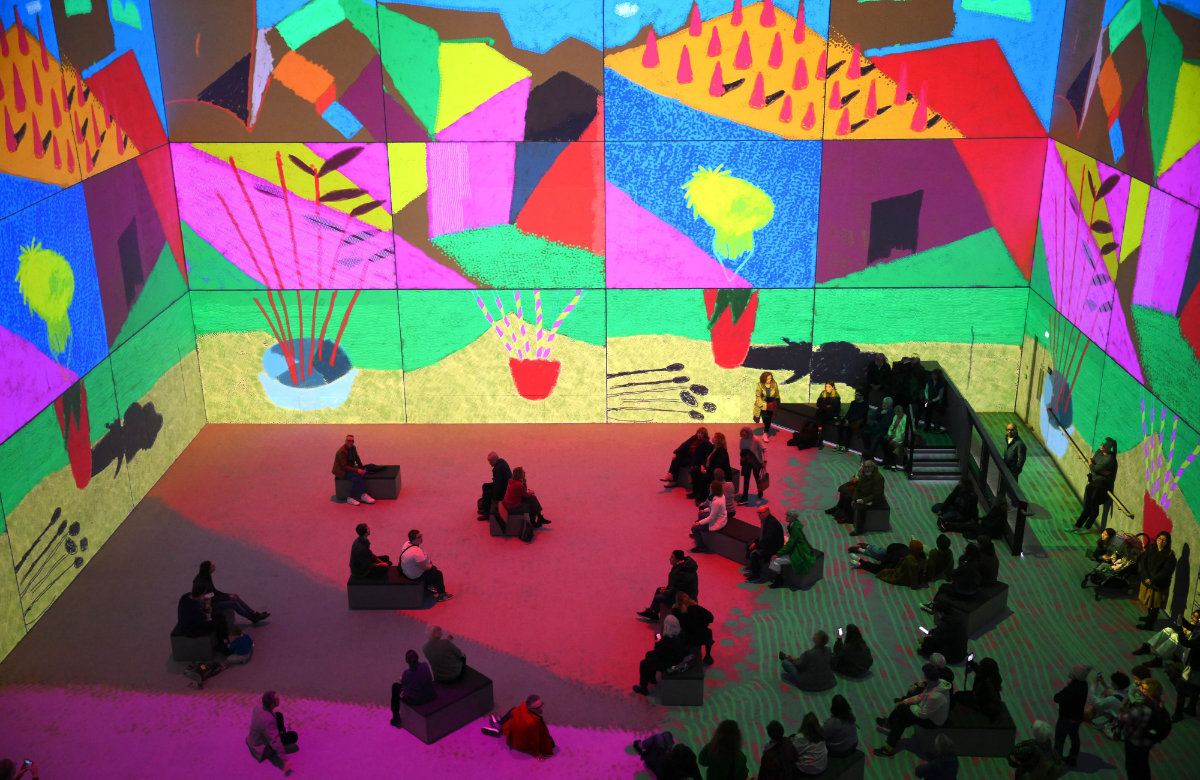
Visitors attend the 'David Hockney: Bigger & Closer (not smaller & further away)’ immersive exhibition at the Lightroom gallery in London on February 22, 2023. (AFP)
In a foreword to the catalogue, Farouk Hosni, who at the time was Egypt’s minister of culture, wrote that “art has never been seen as such a vital and powerful tool of cross-cultural communication and dialogue in the world as it is today, especially in light of the critical recent events that have shaken the world.”
He added: “In these days of dispute, anxiety and confusion, the exhibition is an invitation for all artists and creative people of the world to communicate, and paves the way for a more tolerant, harmonious and human world.”
But thanks to the fallout from the 9/11 attacks and US President George W. Bush’s subsequent “war on terror,” the show ultimately failed to make the big splash that had been hoped for.
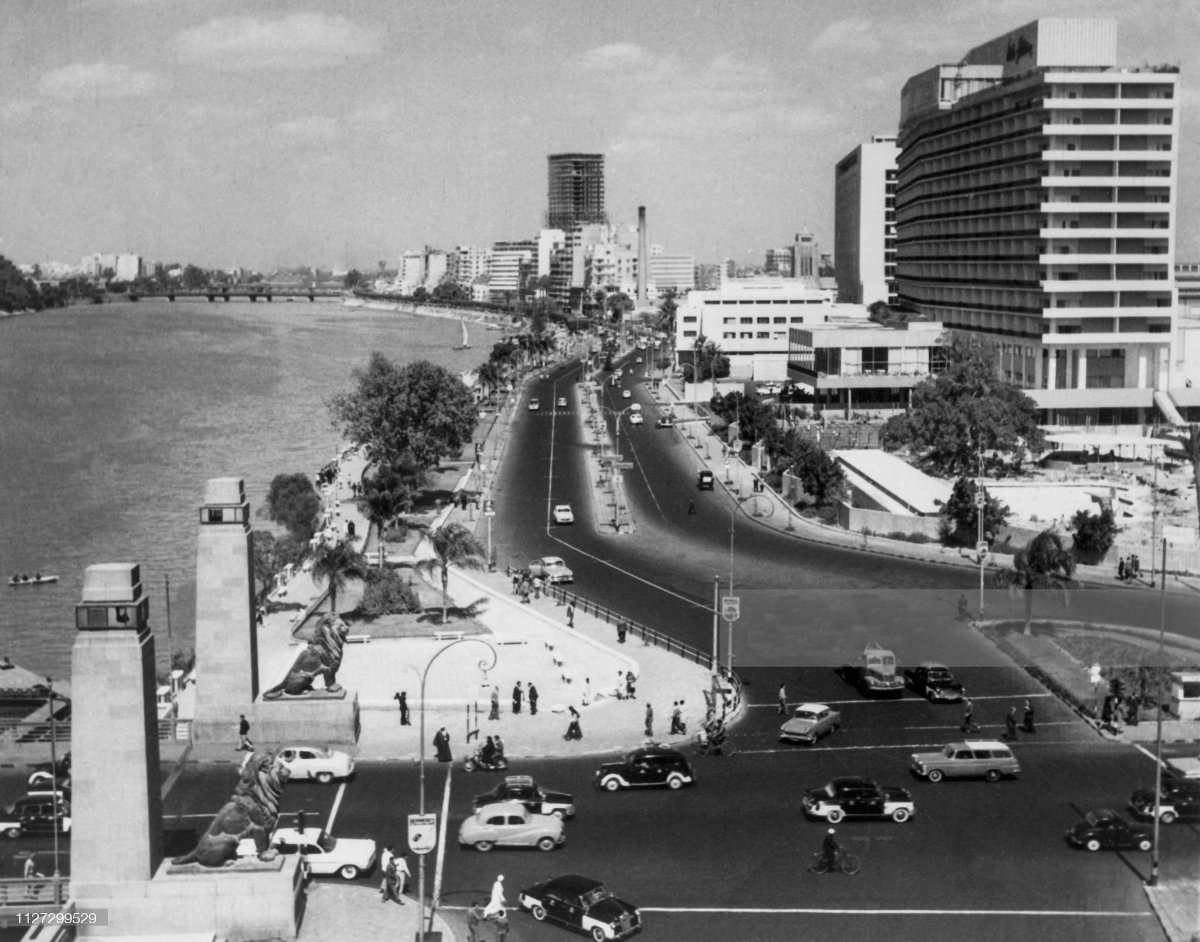
A view of the Nile in Cairo in the 1960s, which inspired David Hockney's "Nile Hilton" painting. (Getty Images/AFP)
“Hockney was meant to go to the opening of the show in Cairo,” Livingstone revealed to Arab News.
“Sheikh Saud wanted it to be a surprise for him. When he got off the plane, he was going to be taken to the Palace of Arts and shown this exhibition, then Sheikh Saud was going to take him on a two-week tour around the Egyptian archaeological sites that are not available to the normal tourist.
“But at the last minute, a day or two beforehand, David decided he didn’t feel safe traveling to the Middle East when there was the possibility of another Gulf war.”
It was an opportunity lost forever.
Although unaware of the secret exhibition that had been created, Hockney had been planning to revisit Egypt again anyway in 2001, after an absence of 22 years, and the catalogue’s poignant conclusion hinted at the possibilities.
“The huge discoveries that he has made in his work during the interim period will undoubtedly affect the kinds of drawings that he will make when he finally arrives there again,” it read.
“Now older and wiser than when he first saw Egypt as a young man, he remains as open as ever to new influences.
“It seems more than likely, therefore, that he will again emerge transformed from the experience, thrilled by the contact with this great and ancient civilisation, spellbound by its magical atmosphere to rise to the challenge of producing more great art.”
Sadly, however, both for art and for Egypt, it was not to be.

















